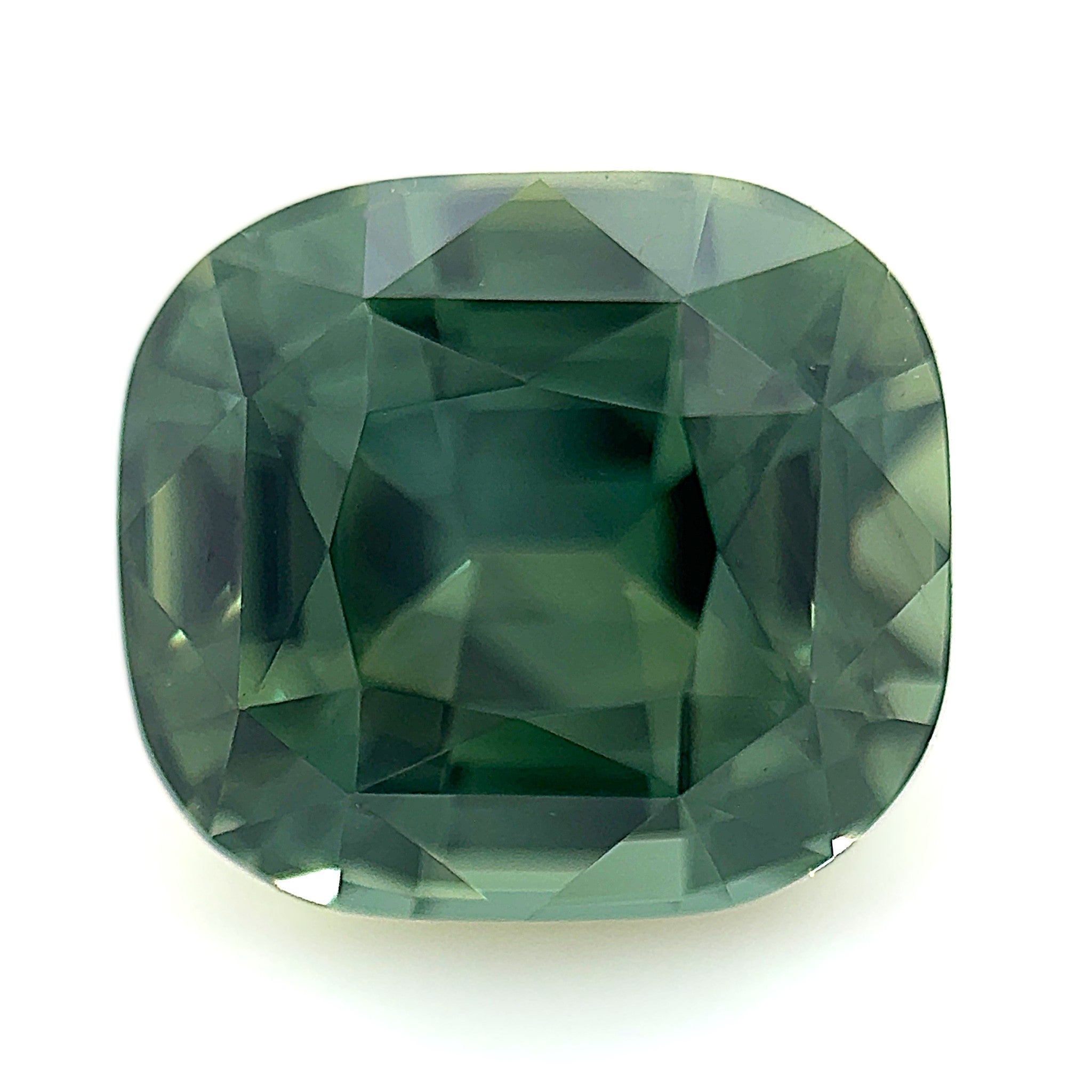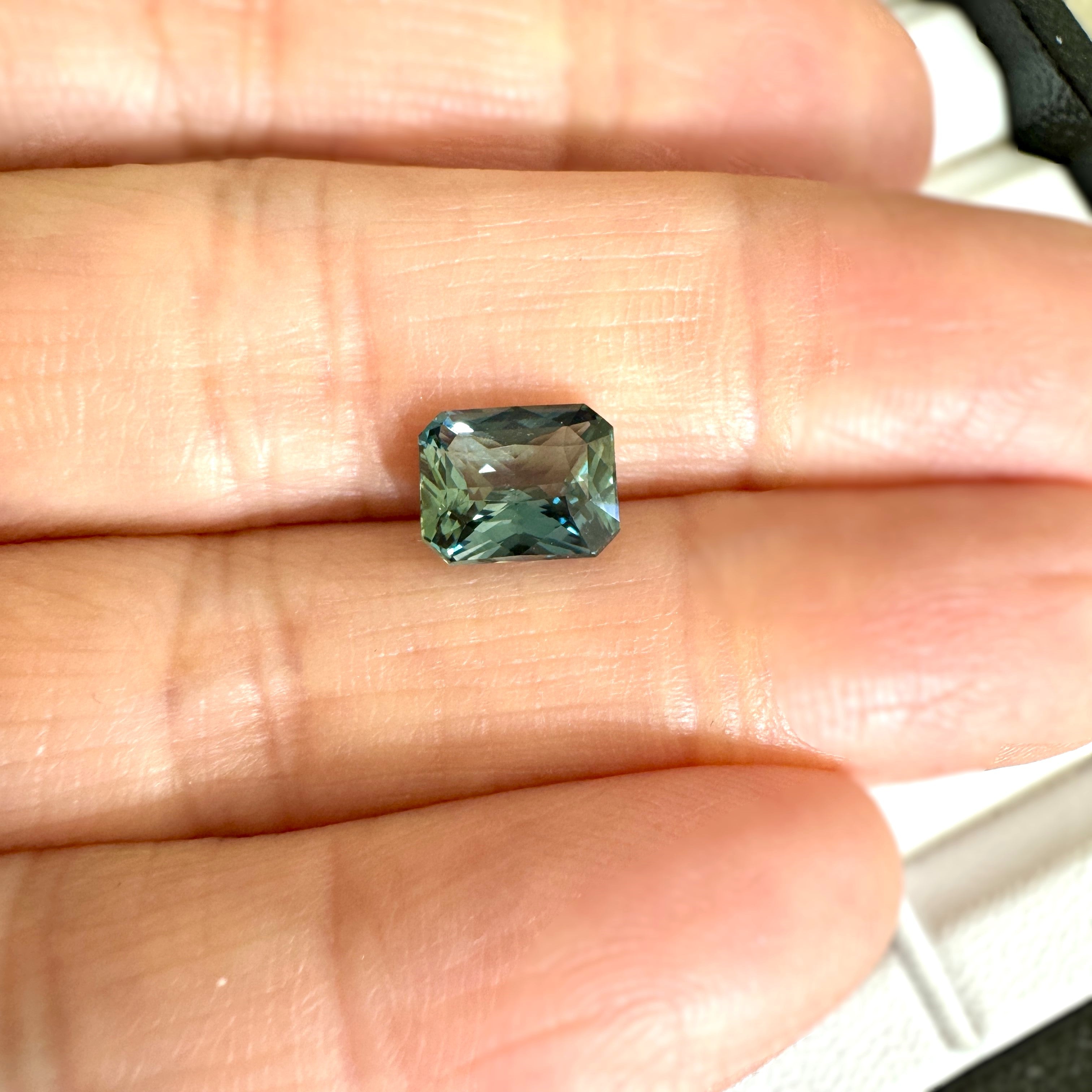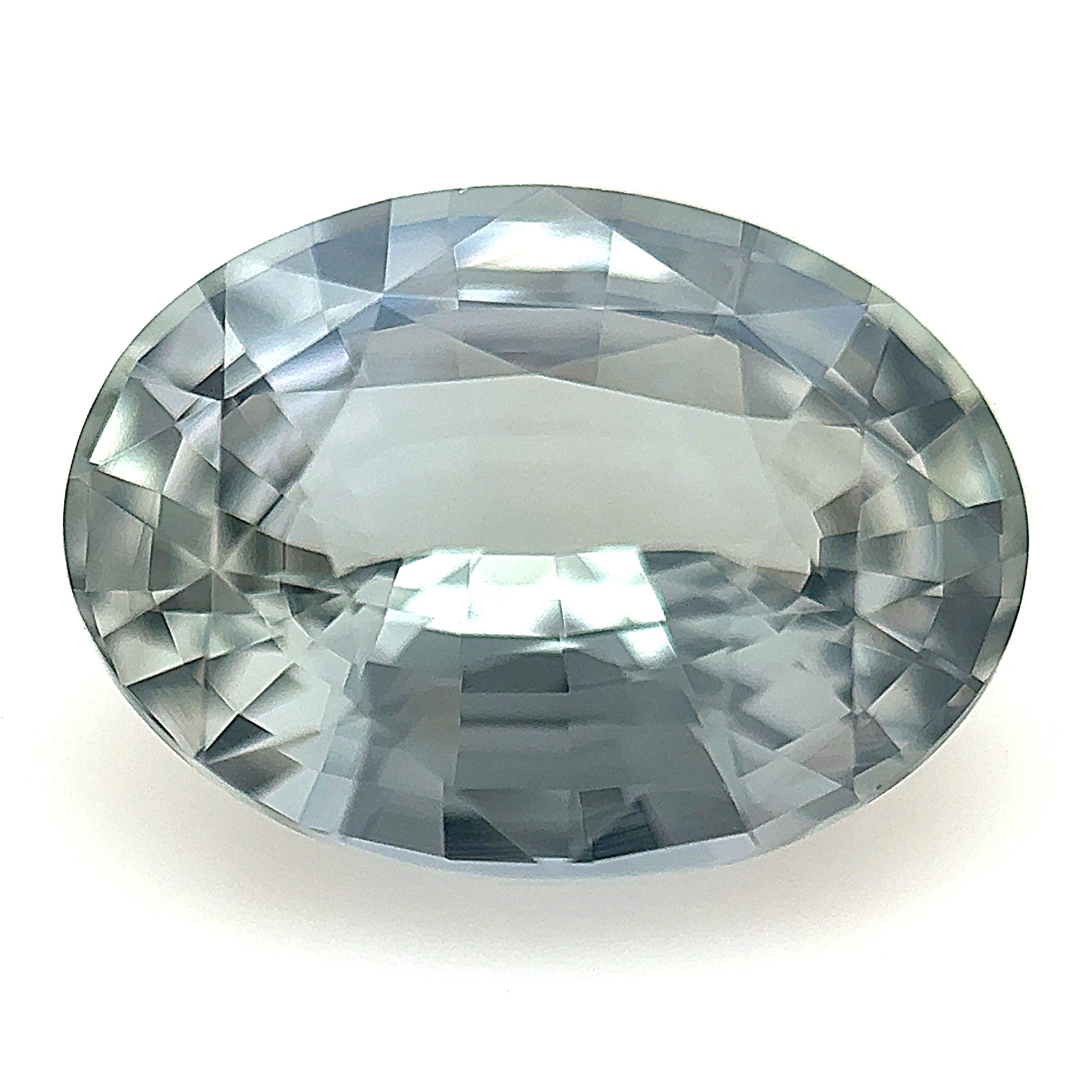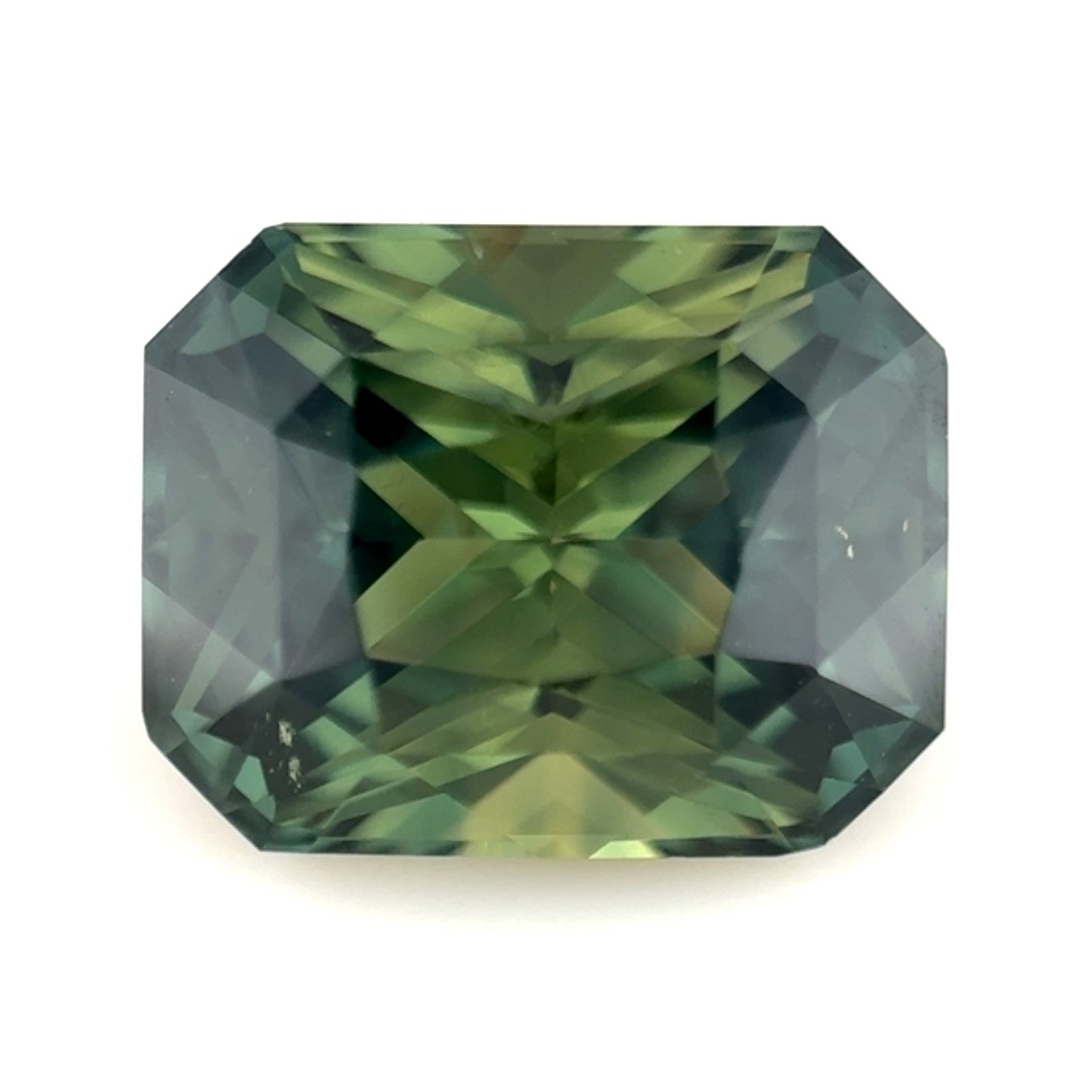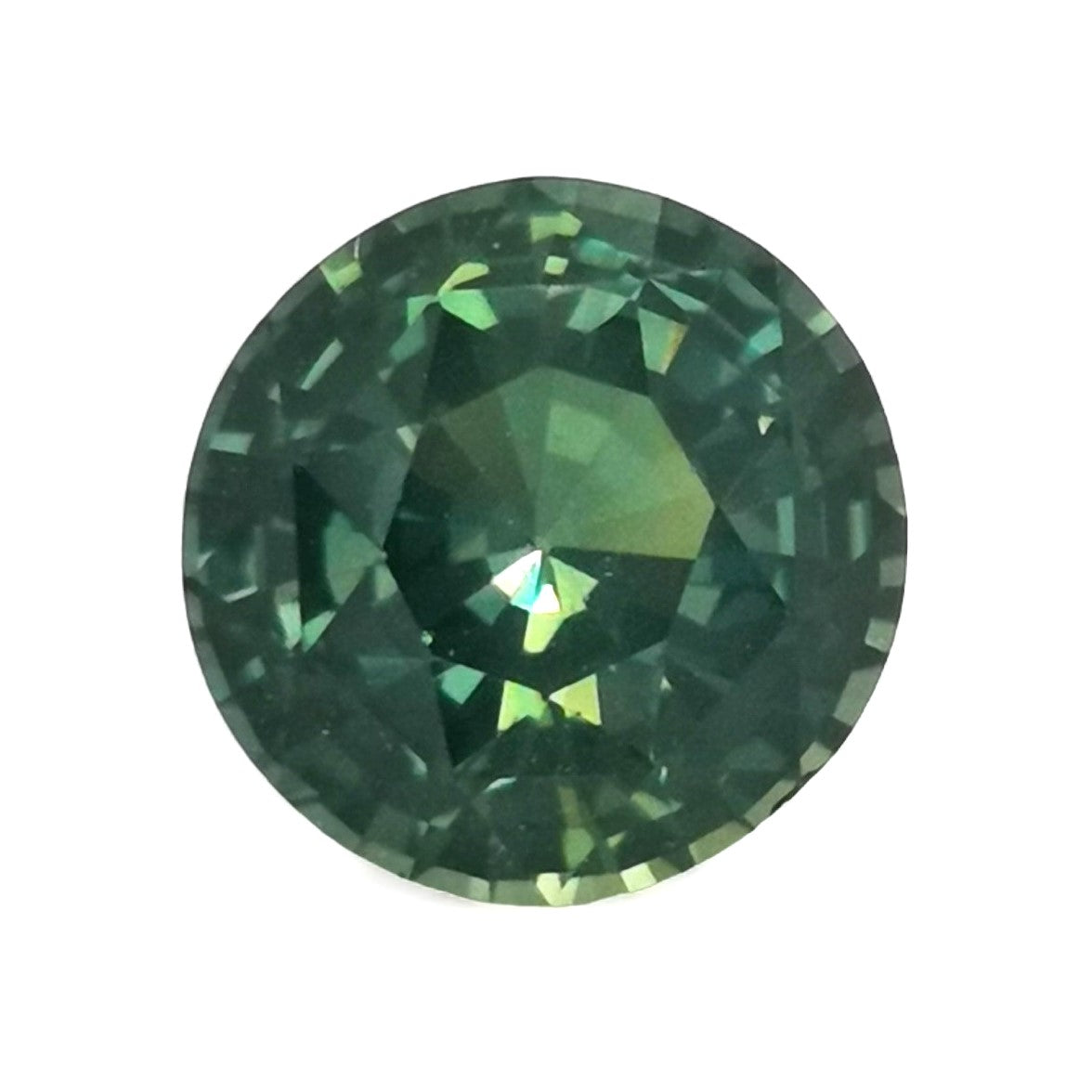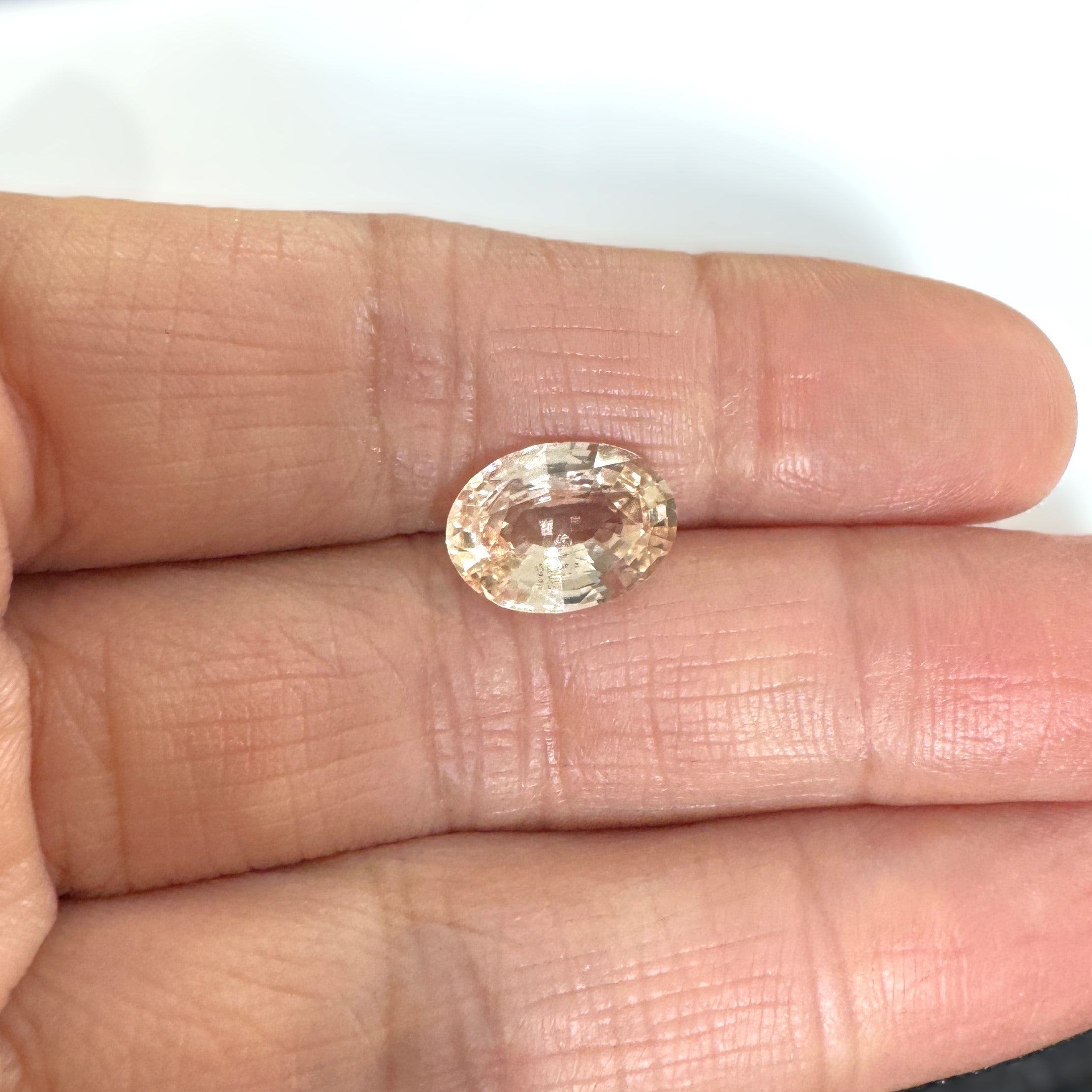Filters
What is a Sapphire Gemstone?
Ever wondered what makes a Sapphire gemstone so unique? A fascinating fact: Sapphires, second only to diamonds, are one of the hardest and most precious gemstones found on Earth. This comprehensive guide will unwrap the mystery of this beautiful stone - its origin, variety in colors, characteristics that determine its value and how it's cared for.
Join us as we delve into the intriguing world of Sapphires!
Key Takeaways
- Sapphire is a precious gemstone that belongs to the corundum mineral and comes in various colors, including blue, pink, green, yellow, purple and parti-colour.
- Blue sapphire is the most popular color of sapphires and symbolizes loyalty and trust.
- Sapphires are known for their durability, making them long-lasting gemstones.
- The value of a sapphire depends on factors like color, clarity, cut, and carat weight.
Sapphires are one of the hardest gemstones on Earth, second only to diamonds. This makes sapphires tough and long-lasting. Sapphires belong to a group called corundum minerals, much like rubies.
When corundum is red, it is classified as ruby but if any other color, it is classified as a sapphire.
Blue is the most loved sapphire color. Other colors like pink, green and yellow are also common and gaining in popularity. The worth of a sapphire depends on its color, its clearness or clarity, how well it's cut, any treatment, size and carat weight.
Deep blue with few flaws inside makes the stone more valuable.
People have loved sapphires for hundreds of years. Ancient Greeks and Romans were big fans too. It stands strong as the birthstone for those born in September.
It symbolizes peace and truthfulness among other good things which adds to its charm.
Sapphire can be found in many countries and their value often depends on the country of origin. The most highly prized are Kashmir sapphires, followed by Ceylon (Sri Lankan) sapphires. Sapphires from Madagascar and Australia are also considered desirable. Thailand, Myanmar & the United States (Montana sapphires) also have extensive deposits.
Overview of Sapphire Gemstone
Sapphire is a precious gemstone that belongs to the corundum mineral and comes in various colors, including blue, pink, yellow, green, orange, purple and parti-color.
What is Sapphire?
Sapphire is a type of gemstone that is highly valued and considered one of the most precious on Earth. It belongs to the mineral called corundum, which is made up of aluminum oxide with traces of iron and titanium.
Sapphires are known for their beautiful blue color, although they can also come in other colors like yellow, pink, purple, and green. These gemstones are very durable and have been treasured for centuries.
They are associated with qualities like peace, truth, innocence, and good health. Sapphires are often used in jewelry such as engagement rings and are also the birthstone for September.
Natural sapphires
Natural sapphires are a type of gemstone that come from the corundum mineral. They are known for their stunning colors, with blue being the most popular. However, they also come in other colors like yellow, pink, purple, and green.
Sapphires are highly valued for their durability and beauty, making them a sought-after choice for jewelry. These gemstones can be found in various countries around the world, each producing unique sapphires with different characteristics and colors.
The value of a natural sapphire is determined by its color, clarity, cut, and carat weight.
Colors of Sapphire
Sapphires come in a variety of colors, but the most popular and sought after is blue. Blue sapphires are valued for their rich and vibrant hues. However, sapphires can also be found in yellow, pink, purple, and green shades.
These different colors are caused by trace elements present in the gemstone. For example, titanium impurities can create shades of blue, while iron creates yellow and green tones. The color of a sapphire greatly affects its value and desirability among collectors and buyers.
Blue sapphire
Blue sapphire is one of the most popular and sought-after colors of sapphires. It is known for its rich and vibrant blue hue, which can range from light to dark shades. Blue sapphires are highly valued for their beauty and rarity.
They have been treasured throughout history and are often used in engagement rings, as they symbolize loyalty, trust, and faithfulness. The value of a blue sapphire depends on factors such as color intensity, clarity, cut, and carat weight.
The most valuable blue sapphires are those that exhibit a deep blue color with excellent clarity and no visible inclusions.
Parti sapphires
Parti sapphires are a unique type of sapphire that displays multiple colors within the same stone. These sapphires have distinct color zoning, with different sections showing different hues.
For example, a parti sapphire might have blue and yellow or green and pink sections. This phenomenon occurs due to variations in trace elements and growth conditions during the crystal's formation.
Parti sapphires are highly prized for their vibrant colors and individuality, making them a popular choice among gemstone enthusiasts.
Pink sapphires
Pink sapphires are a beautiful variation of the sapphire gemstone. While blue sapphires are the most well-known, pink sapphires have gained popularity in recent years. These gems range in color from light to deep pink and can sometimes even have hints of purple.
Pink sapphires are often associated with love, romance, and femininity. They make stunning additions to jewelry pieces such as engagement rings or pendants. Like all sapphires, their value is determined by factors like color, clarity, cut, and carat weight.
So if you're looking for a unique and vibrant gemstone option, consider the elegance of pink sapphires.
Padparadscha
Padparadscha is a unique and rare variety of sapphire that is known for its delicate pinkish-orange color. The name "padparadscha" comes from the Sinhalese word for lotus blossom, which reflects the gemstone's beautiful hue.
Padparadschas are highly prized and sought after by collectors and jewelry enthusiasts due to their scarcity and distinctive coloring. These gemstones are mainly found in Sri Lanka, although they have also been discovered in other parts of the world such as Madagascar and Tanzania.
The value of padparadscha sapphires depends on factors like size, color intensity, clarity, and overall quality.
Star sapphire
Star sapphires are a unique type of sapphire that display a phenomenon called asterism. This is when the stone exhibits a star-shaped pattern when light is reflected off its surface.
The star is created by needle-like inclusions, also known as silk, which intersect within the crystal structure. These inclusions align with the crystal's axes and cause light to reflect in a way that creates the distinctive star effect.
Star sapphires come in different colors, including blue, pink, and gray. The most valuable ones have sharp and well-defined stars with good color saturation and transparency.
Color-change sapphire
Color-change sapphires are a special type of sapphire that can change color depending on the lighting conditions. These unique gemstones exhibit different colors under natural daylight and artificial light sources.
For example, a color-change sapphire may appear blue in natural daylight but turn purple or pink under incandescent or fluorescent lighting. This phenomenon is caused by the presence of trace elements such as chromium, iron, and vanadium within the sapphire crystal structure.
The rarity and beauty of color-change sapphires make them highly sought after by collectors and jewelry enthusiasts.
Large rubies and sapphires
Large rubies and sapphires are highly valued gemstones due to their rarity and beauty. These large stones, with their deep red or vibrant blue colors, are sought after by collectors and jewelry enthusiasts alike.
The value of these gems is determined by factors such as size, color intensity, clarity, and overall quality. Large rubies and sapphires can be used to create stunning statement pieces of jewelry that make a bold impact.
These precious stones are often considered an investment due to their enduring value and timeless appeal.
Sapphire is a precious gemstone known for its beautiful blue color. It is one of the hardest gemstones in the world, just after diamond. Sapphires are made from a mineral called corundum, which contains aluminum oxide and small amounts of iron and titanium.
They have been treasured for centuries and were highly valued by ancient Greeks and Romans. Sapphires come in various colors, but blue sapphires are the most sought after and popular.
They are believed to symbolize peace, truth, innocence, and good health. Sapphires can be found in different countries around the world, each producing unique colors and characteristics.
Synthetic sapphires created in laboratories are also available as an alternative to natural ones.
Characteristics and Value of Sapphire
Sapphire gemstones are valued for their distinct characteristics, including their cause of color, inclusions, luminescence, absorption spectrum, and the presence of silk inclusions.
Cause of color
The color of a sapphire is caused by the presence of certain elements and impurities. For example, blue sapphires get their color from the presence of iron and titanium. The amount of these elements determines the shade of blue, ranging from light to dark.
Other colors in sapphires, such as pink or yellow, are caused by different impurities. These impurities affect how light interacts with the gemstone, resulting in various colors. The most valuable sapphires have intense and vibrant hues without any visible impurities.
Sapphires can also exhibit phenomenon known as asterism or "star." This occurs when needle-like inclusions scatter light forming a star-shaped pattern on the surface of the stone. This effect is highly prized and can add value to a star sapphire.
Inclusions
Sapphires can have inclusions, which are tiny imperfections trapped inside the gemstone during its formation. These inclusions can affect the clarity and value of the sapphire. Some common inclusions include mineral crystals, gas bubbles, and needle-like rutile silk.
In some cases, these inclusions can create a unique visual effect known as asterism or "star" sapphires. Typically, sapphires with minimal inclusions are considered more valuable.
Luminescence
Sapphires can display a fascinating phenomenon called luminescence. This means that under certain lighting conditions, they emit a special glow or fluorescence. For example, when exposed to ultraviolet light, some sapphires may emit a vibrant blue glow known as "fluorescence." This unique characteristic adds to the allure and beauty of these gemstones.
Each sapphire has its own individual pattern and intensity of luminescence, making them truly captivating and distinctive.
Absorption spectrum
The absorption spectrum of a sapphire is the range of colors it absorbs and reflects. When light passes through a sapphire, certain wavelengths are absorbed, while others are reflected back to our eyes.
This is what gives sapphires their unique color. The absorption spectrum of a sapphire can vary depending on its impurities and chemical composition. For example, blue sapphires absorb all colors except blue, which is why they appear blue to us.
Different impurities can create other colors in sapphires, such as yellow or pink. By studying the absorption spectrum, gemologists can determine if a sapphire is natural or treated and identify any enhancements that may have been applied to enhance its color or clarity.
Silk inclusions
Sapphires often contain natural inclusions, one of which is called silk. These are tiny needle-like mineral inclusions that can give the stone a cloudy or milky appearance. The presence of silk can affect the clarity and overall value of the sapphire.
However, in some cases, silk can create a special optical phenomenon known as asterism or "star effect." This occurs when light reflects off the needles and creates a star-shaped pattern on the surface of the gemstone.
Star sapphires with this unique characteristic are highly prized by collectors and jewelry enthusiasts.
Kashmir sapphires, known for their exceptional quality and rarity, often exhibit fine silky inclusions that contribute to their sought-after velvety appearance. These gems were discovered in 1881 in an area now located between India and Pakistan.
Due to their limited supply, Kashmir sapphires are considered some of the most valuable and desirable sapphires on the market today.
Distinctive features of Kashmir sapphires
Kashmir sapphires are known for their exceptional quality and rarity. These sapphires have a unique velvety blue color that is highly coveted in the gemstone world. They exhibit a stunning cornflower blue hue with a hint of violet, which sets them apart from sapphires found in other locations.
The distinctive feature of Kashmir sapphires is their remarkable transparency, allowing light to pass through the stone effortlessly. This gives them an ethereal glow that enhances their beauty and value.
Due to limited mining in the region and political conflicts, Kashmir sapphires are incredibly scarce, making them highly prized by collectors and enthusiasts alike.
Identifying sapphires
Sapphires can be identified by their distinctive characteristics. One way to identify a sapphire is by its color, with blue being the most sought after. The stone should also have good clarity and exhibit a vivid hue.
Another identifying feature is the presence of inclusions, which are tiny imperfections within the stone that can provide clues about its origin. Sapphires are also known for their high hardness, scoring a 9 on the Mohs scale.
By considering these factors, you can confidently identify a genuine sapphire gemstone.
How to care for sapphire jewelry
To keep your sapphire jewelry looking its best, there are a few simple care tips to follow. First, avoid exposing your sapphires to harsh chemicals or extreme temperatures. This means taking off your jewelry before swimming in pools or hot tubs and removing it before using cleaning products.
Second, clean your sapphire jewelry regularly with mild soap and warm water. You can use a soft brush to gently scrub away any dirt or residue. Finally, store your sapphire jewelry separately from other pieces to prevent scratches and damage.
Following these steps will help maintain the beauty and shine of your sapphire jewelry for years to come.
Sapphires are a type of gemstone that is highly valued and treasured. They are known for their durability and hardness, making them one of the most precious gemstones on Earth. Sapphires are made up of a mineral called corundum, which also produces rubies.
These gems have been appreciated for centuries and were popular among ancient Greeks and Romans. In fact, sapphires have been associated with peace, truth, innocence, and good health.
They're even believed to protect wearers from evil.
One interesting thing about sapphires is that they come in different colors such as blue, yellow, pink, purple, and green. However, it's the beautiful blue sapphires that are the most sought after by people.
The value of a sapphire depends on factors like its color intensity, clarity (how clear it is), cut (how well it has been shaped), and carat weight (size). The more vivid blue a sapphire is without any impurities or flaws inside it makes it more valuable.
Sapphires can be found in various countries around the world including Sri Lanka Myanmar Madagascar Australia etc., each location producing unique variations in terms of characteristics and colors exhibited by these gemstones.
Origin and Mining of Sapphire
Sapphires are found in various locations around the world, including Madagascar, Sri Lanka, and Australia. Learn more about their origin and mining methods to discover the fascinating journey of these beautiful gemstones.
Where do sapphires come from?
Sapphires come from different parts of the world, including Sri Lanka, Madagascar, Myanmar, and Australia. These countries have mining sites where sapphires are found. Each location produces sapphires with unique colors and characteristics.
For example, sapphires from Sri Lanka are known for their vibrant blue hues, while those from Australia often have a deep green color called "parti" sapphire. It's fascinating how these beautiful gemstones are formed in various corners of the globe!
Silk inclusions
Sapphires can sometimes have tiny threads of minerals inside them, called silk inclusions. These silky lines are made up of a mineral called rutile and give the sapphire a unique appearance.
Silk inclusions can create a phenomenon known as asterism, where the sapphire displays a star-like pattern when cut into a cabochon shape. This makes star sapphires highly valued by collectors and gem enthusiasts.
The presence of silk inclusions can also affect the clarity of the stone, with fewer inclusions leading to higher quality and value.
Distinctive features of Kashmir sapphires
Kashmir sapphires have distinct features that make them highly prized and sought after. These sapphires are known for their incredible velvety blue color, often described as "cornflower blue." The color is intense and mesmerizing, with a unique combination of depth and brilliance.
Kashmir sapphires also exhibit exceptional clarity, with few inclusions or impurities visible to the naked eye. This high clarity enhances the beauty and value of these gemstones. Another distinctive feature of Kashmir sapphires is their silky appearance due to fine needle-like inclusions called silk.
This phenomenon creates a soft glow within the stone, adding to its allure. The scarcity of Kashmir sapphires adds to their desirability, as they were only found in a limited region during a brief period in history.
Identifying sapphires
Sapphires can be identified based on several factors. One important factor is their color, with the most valuable sapphires being a vivid blue hue. The clarity of the stone is also crucial, as high-quality sapphires have few visible flaws or inclusions.
Another characteristic to look for is the cut of the gemstone, which should be well-proportioned and symmetrical. Finally, considering the carat weight can give an indication of a sapphire's size and value.
By examining these aspects, experts can determine if a stone is indeed a genuine sapphire.
How to care for sapphire jewelry
To ensure the longevity and beauty of your sapphire jewelry, there are a few important care tips to keep in mind. Firstly, it's essential to remove your sapphire jewelry before engaging in any strenuous activities or using harsh chemicals.
This will help prevent any potential damage or scratches. Secondly, it is recommended to store your sapphire jewelry separately from other pieces to avoid scratching. Also, make sure to clean your sapphire regularly with mild soap and warm water using a soft cloth or brush gently.
Avoid exposing your sapphires to extreme temperatures as this can cause thermal shock and lead to cracking or damage. Lastly, it is advisable to have periodic professional cleanings and inspections done by a reputable jeweler who specializes in gemstone jewelry.
Sapphire is a very valuable and hard gemstone that comes in many different colors. It is made from a mineral called corundum, which is also used to make rubies. Sapphires have been loved and cherished for a long time, with people in ancient Greece and Rome treasuring them too.
They are especially popular as engagement ring stones and as September birthstones. The color of the sapphire affects its value, with blue sapphires being the most sought after. These gemstones are found in several countries around the world, each producing unique variations of colors and characteristics.
Synthetic sapphires created in laboratories are also available as an alternative to natural ones.
Synthetic and Treated Sapphires
Synthetic sapphires are created in a lab using various growth methods, while treated sapphires undergo enhancements to improve their color and clarity.
Synthetic sapphires
Synthetic sapphires are man-made versions of the gemstone. They are created in laboratories using a process called crystal growth. These synthetic sapphires have the same chemical composition and physical properties as natural sapphires, but they are made under controlled conditions.
Synthetic sapphires can be used as an alternative to natural ones, especially for those who prefer a more affordable option. Despite being lab-grown, they still possess the durability and beauty that make sapphires so desirable.
Dopants
Dopants are substances that can be added to synthetic sapphires during the manufacturing process. These substances are used to change or enhance the color of the sapphire. For example, chromium is a common dopant that creates pink or red hues in sapphires, while iron and titanium can create yellow or green tones.
By adding specific dopants, manufacturers can mimic the colors found in natural sapphires and offer a wider range of options to consumers. Synthetic sapphires with dopants are often more affordable than their natural counterparts but still possess many of the same desirable qualities.
Other growth methods
Sapphires can also be created using other growth methods apart from natural formation. One common method is the use of synthetic sapphires, which are produced in laboratories. These synthetic sapphires have the same chemical composition as natural sapphires but are man-made.
Another method is called flux growth, where a solution of chemicals and minerals is heated to create sapphire crystals. This process allows for the production of large and high-quality sapphires.
Other methods include hydrothermal growth and flame fusion, each with its own unique characteristics and advantages. However, it's important to note that natural sapphires are highly valued due to their rarity and history.
Enhancements and treatments
Enhancements and treatments are commonly applied to sapphires to improve their appearance or durability. One common treatment is heat treatment, where the gemstone is heated to enhance its color or clarity.
This process can remove impurities and create a more vibrant hue. Another treatment method involves filling fractures with glass-like substances to make them less noticeable. Some sapphires may also undergo diffusion treatment, where chemicals are used to alter the color of the stone.
It's important for buyers to be aware of these treatments as they can affect the value and authenticity of a sapphire.
Sapphire lookalikes
Sapphires have several lookalikes that can sometimes be mistaken for the precious gem. One common lookalike is blue spinel, which has a similar color to blue sapphires but is less expensive.
Another lookalike is tanzanite, which also comes in shades of blue and violet. However, tanzanite is much softer than sapphire and requires extra care. Additionally, certain types of topaz can resemble sapphires due to their blue color.
It's important to be aware of these alternatives when purchasing jewelry or gemstones to ensure you are getting an authentic sapphire.
Comparison to diamonds
Sapphires are often compared to diamonds because they are both precious gemstones. While diamonds are prized for their brilliance, sapphires have a different kind of beauty. Sapphires come in a range of colors, with blue being the most popular, whereas diamonds are typically colorless.
Sapphires also have a lower price point compared to diamonds, making them an attractive option for those looking for a beautiful and durable gemstone without breaking the bank. Additionally, sapphires are known for their hardness and durability just like diamonds, making them suitable for everyday wear.
Rarity and value of sapphires
Sapphires are considered rare and valuable gemstones. Their value is determined by factors such as color, clarity, cut, and carat weight. The most valuable sapphires have a vivid blue color and few impurities.
Blue sapphires are especially sought after and popular. The rarity of high-quality sapphires contributes to their value in the market. Sapphires can be quite expensive, especially those with exceptional quality and large sizes.
Conclusion
In conclusion, a sapphire gemstone is a precious and durable jewel that comes in various colors like blue, yellow, pink, purple, and green. It is considered one of the hardest gemstones on Earth and has been treasured for centuries.
Whether it's for September birthdays or special anniversaries, sapphires are highly valued and cherished by many.
FAQs
1. What is a Sapphire Gemstone?
A Sapphire gemstone is a blue stone made of aluminium oxide. It is known for its colour and beauty.
2. What are the powers of the Sapphire gemstone?
Sapphire stones have meanings that link to healing and calmness. They are also seen as signals of love, thus popular in engagement rings.
3. Do Sapphires come in other colors beside blue?
Yes! Even though sapphires are well-known as a blue gem, they can be found in many colors like green, purple, pink and more!
4. Why do people choose sapphire for an engagement ring?
People choose sapphire engagement rings because the sapphire properties symbolize wisdom, virtue and good fortune that they wish to share with their partner.












